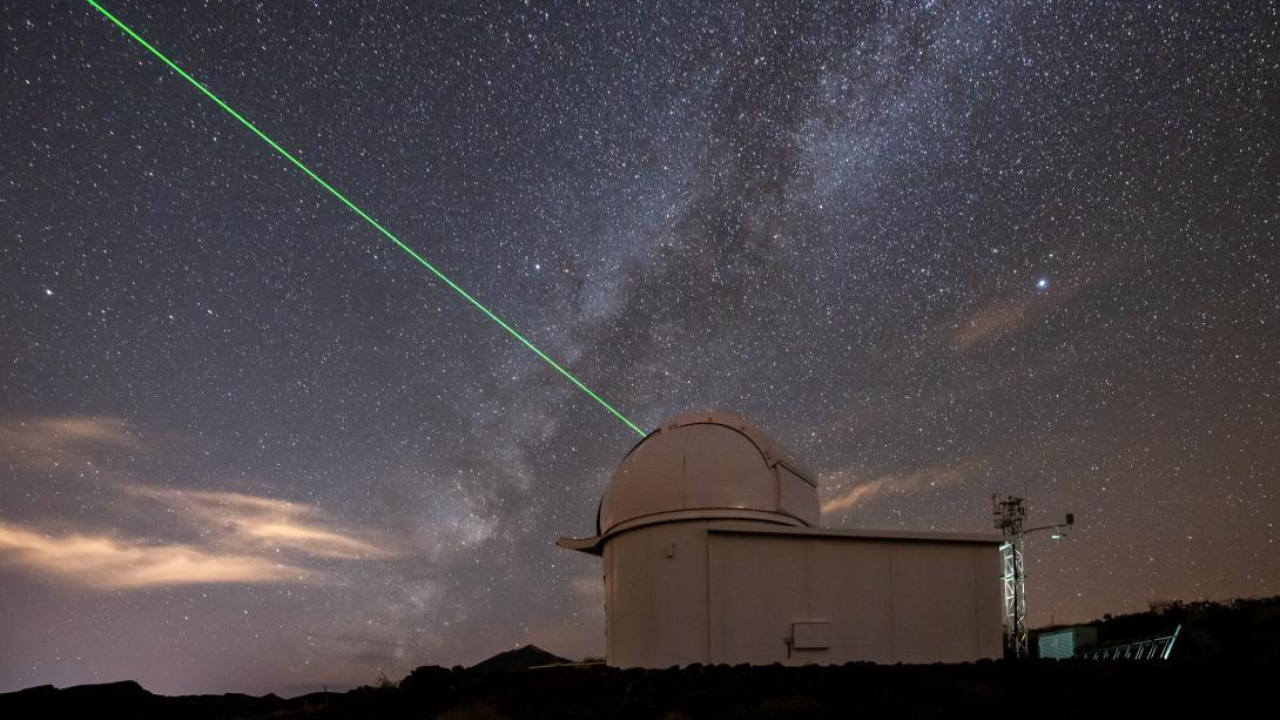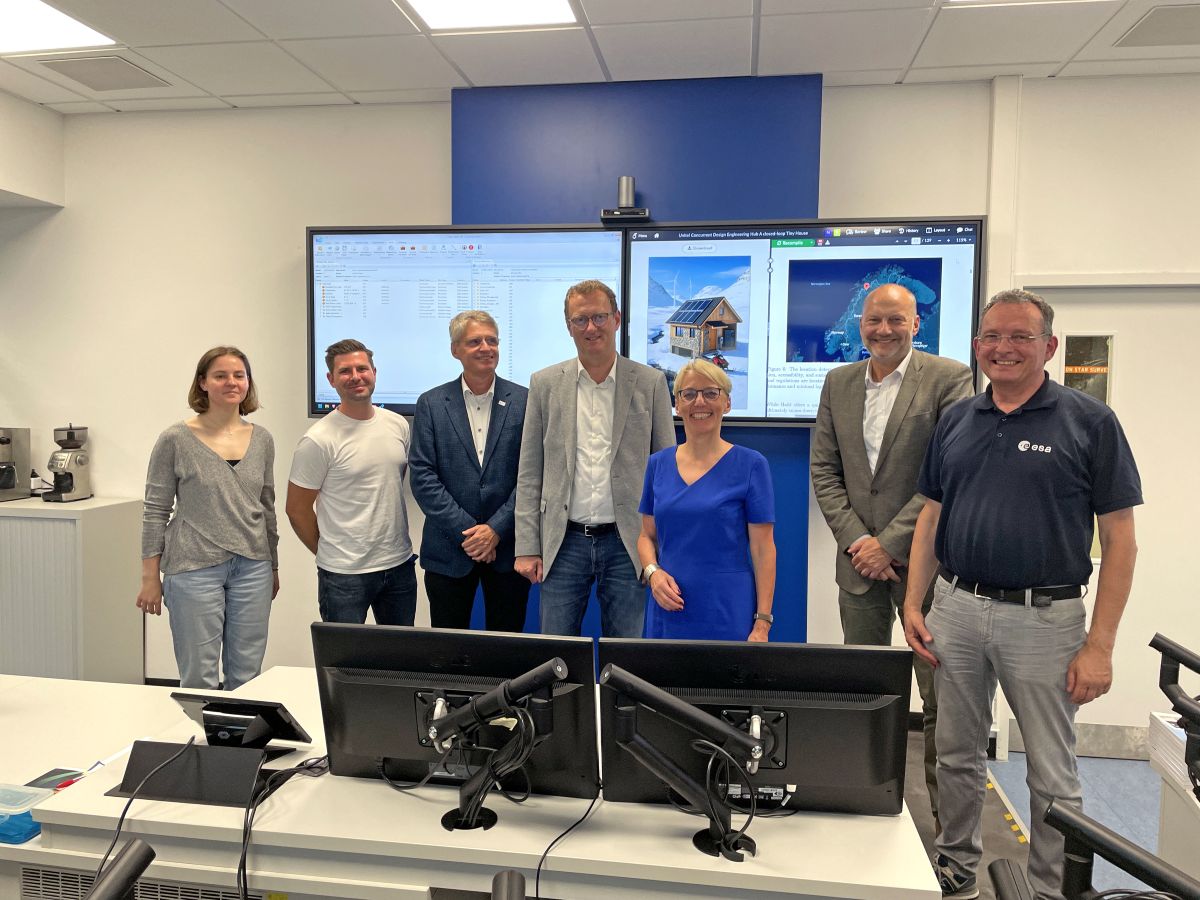Emerging trends and innovations in Optical Communication: insights from the latest workshop
The recent Optical Nucleus Network (ONN) brought together industry leaders, researchers, and space agency representatives at ESOC to explore the future of optical communication in space. The discussions revolved around key topics such as upcoming trends, the role of mass-produced constellation ISL terminals, the maturation of subsystems and standards, and the European Space Agency’s (ESA) pivotal role in facilitating these advancements. Optical communications have been a key strategic focus for the evolution of ESA's Ground Segments, managed at ESOC, driving advancements in data transmission capabilities and enhancing overall connectivity.
Key Themes and Discussions
Upcoming trends in the space segment
Participants delved into the anticipated trends in the space segment over the next five years, focusing on single missions and constellation scenarios. The consensus was that optical communication would play a critical role in enhancing data transmission efficiency. Direct-to-Earth (DTE) links were identified as a significant area poised to benefit from optical communication, promising improvements in speed and reliability. Additionally, the workshop highlighted the need to address operational challenges by integrating experimental terminals on spacecraft and exploring applications for large earth observation satellites equipped with optical communication terminals.
Utilising mass-produced constellation ISL terminals
The integration of mass-produced constellation inter-satellite link (ISL) terminals for DTE communication was a key focus. Stakeholders brainstormed innovative solutions to repurpose ISL terminals designed for constellation connectivity, optimising resource utilisation and expanding the reach of optical communication networks. This approach could significantly enhance the efficiency and coverage of optical communication systems, making them more accessible and cost-effective.
Maturity of subsystems and standards
The maturation of subsystems and standards emerged as a crucial aspect of developing an optical ground station (OGS) network. Participants emphasised the need for standardised protocols and interoperability to ensure seamless communication between satellites and ground stations. Advancing these critical components is essential for accelerating the deployment and adoption of optical communication technologies, enabling more robust and reliable data transmission.
ESA's role in facilitating optical ground station networks
Central to the discussion was the role of the ESA in establishing an optical ground station network. Participants highlighted ESA's potential to bridge the gap between various stakeholders, including OGS operators and satellite providers. By fostering collaboration and promoting interoperability, ESA can catalyse the growth of optical communication infrastructure, paving the way for enhanced connectivity and data transmission capabilities.
Infusing coherent Optical Communication into the ONN
The integration of coherent optical communication was identified as a key strategy to enhance the maturity and sensitivity of optical communication systems. Participants explored the feasibility of leveraging terrestrial optical communication technologies and adapting them for space applications. While acknowledging the need for further technological development and standardisation, stakeholders expressed optimism about the potential of coherent modulation to elevate the performance of Optical Nucleus Networks (ONNs).
Keynote presentations: highlights and innovations
Several keynote presentations provided insights into the latest advancements and challenges in the field:
- TESAT discussed the serial production of optical communication terminals (OCTs) for inter-satellite links and DTE links.
- Safran showcased the IRIS OGS, a multi-standard optical ground station ready for CCSDS satellite communication, and its integration into the Nucleus Network.
- Officina Stellare addressed the industrialization of OGS for quantum and classical communication, focusing on challenges such as eye safety and atmospheric effects.
- SSC introduced the NODES Project, aimed at deploying an optical communication ground network for LEO-to-ground data repatriation services.
- THALES highlighted the importance of site diversity and the need for standardization in LEO applications, discussing various optical terminals for orbit-to-ground communication.
Afternoon sessions: industry contributions and poster pitches
The afternoon sessions featured contributions from various industries, showcasing advancements in OGS solutions, handover management for free-space optical communication (FSOC), adaptive optics, sky monitoring, and laser technologies. Companies like AMOS, HITECH, ASA, Astrolight, and others presented their cutting-edge technologies that could play a pivotal role in the development of ONNs.
Final discussion: addressing challenges and opportunities
The final discussion underscored several key points:
- The need for reliable communication links between satellites and OGSs.
- Continued efforts in standardisation to ensure inter-compatibility and foster network growth.
- ESA's role in harmonising backend standards and facilitating collaboration between different sectors.
- Addressing the scarcity of OGSs and enhancing the maturity of optical communication systems.
- Exploring applications for large earth observation satellites to drive further innovation in the sector.
Conclusion
The workshop highlighted the significant strides being made in the field of optical communication, with a focus on overcoming operational challenges, standardising protocols, and fostering collaboration. The discussions underscored the potential of optical communication to revolutionise space data transmission, with ESA playing a crucial role in driving these advancements. As the industry continues to innovate and evolve, the future of optical communication in space looks promising, paving the way for enhanced connectivity and more efficient data transmission across the globe.



